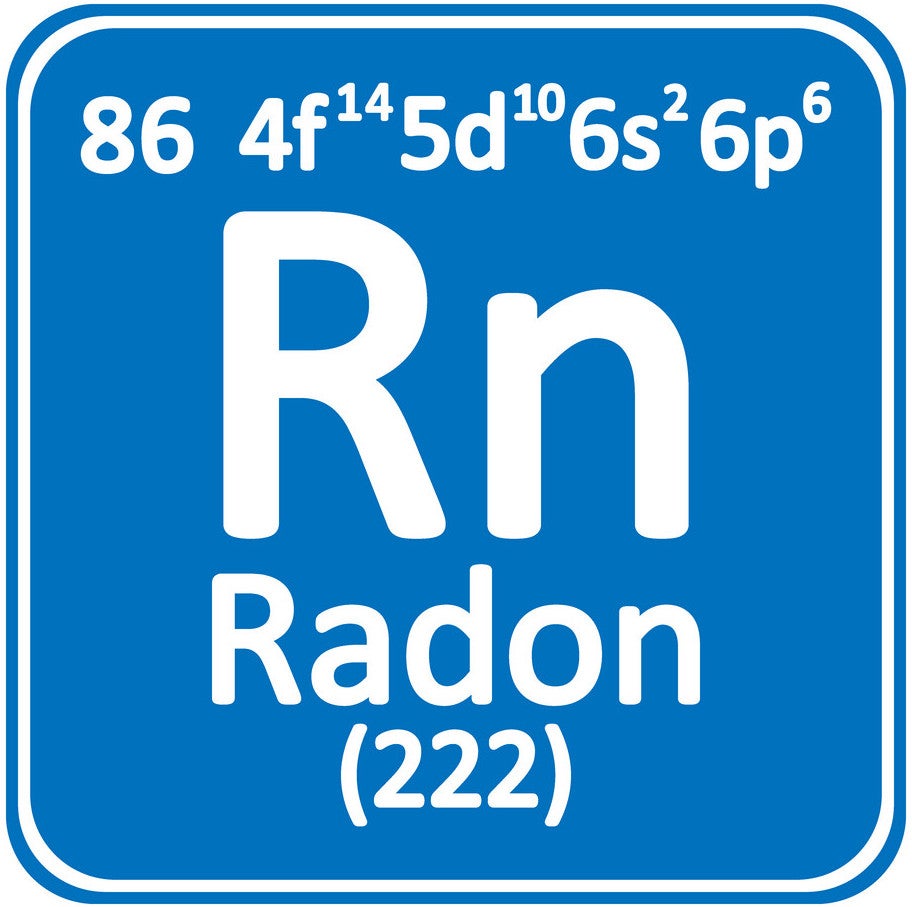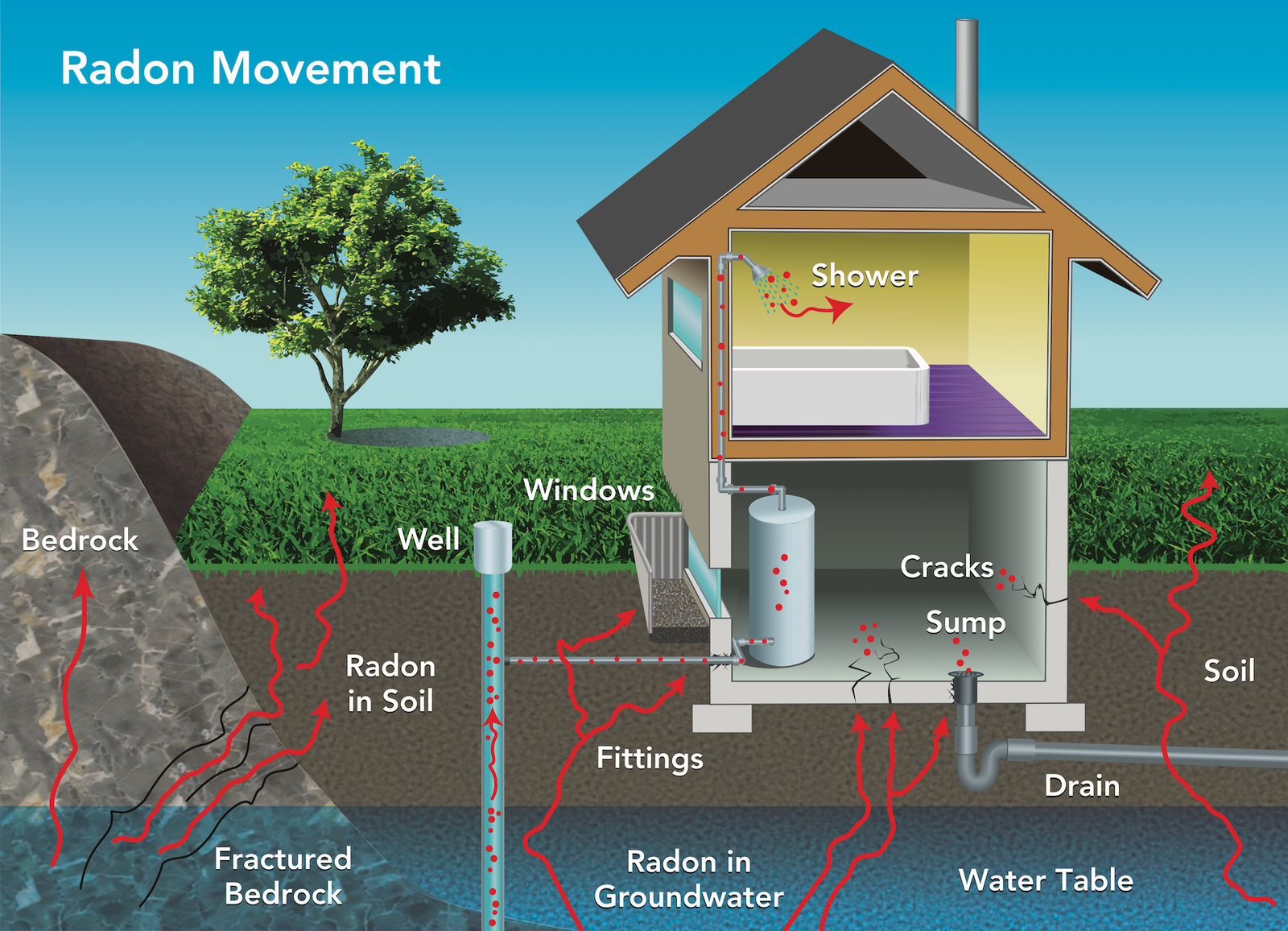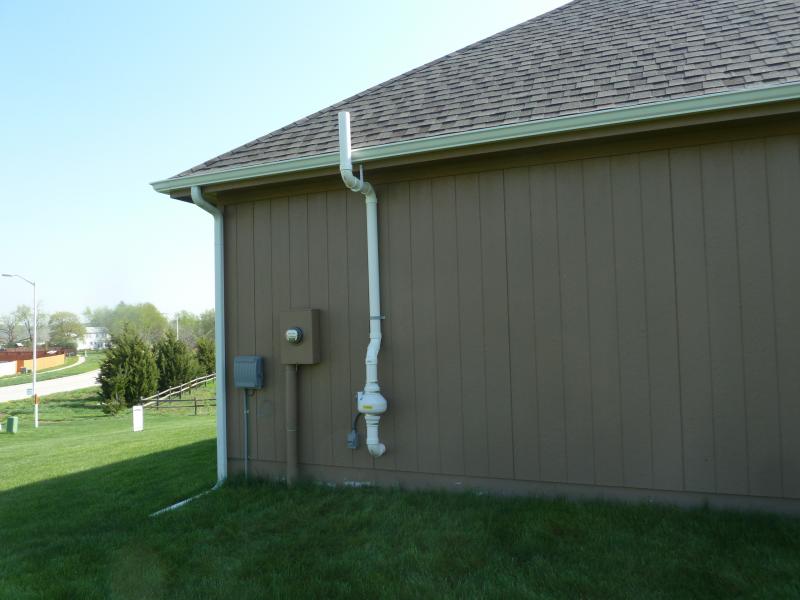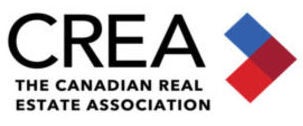Introduction
Radon — a naturally occurring radioactive gas produced by the breakdown of the uranium in soil, rocks, and water — is present in all houses. Left unmitigated, high levels of radon can present significant health risks, so testing is an important element of responsible home ownership. Long-term testing, advocated by Health Canada, provides the most accurate measure of indoor radon. It is inexpensive and can be accomplished by the homeowner.Modifying a house to lower radon levels is relatively inexpensive, with costs being comparable to other home maintenance expenses, and there are a variety of options available. A qualified radon specialist can help homeowners make an informed decision.
What is radon?
Radon is a radioactive gas that is odourless, colourless, and tasteless. It is produced by the breakdown of uranium found in sediment (soil), rocks, and water. When radon is released into the atmosphere it gets diluted and poses negligible risk to human health. However, if radon accumulates inside a home, it can pose a serious health risk. Radon is found throughout Canada, but concentrations differ depending on the composition of the bedrock or sediment.
What are the dangers of high indoor radon levels?
Left unmitigated, high levels of radon in a home can create a long-term health risk for residents . When inhaled, radon gas particles remain in lung tissue and begin to decay. As the radon particles decay, they release bursts of radiation that can damage the lung tissue cells. Over time, the cell damage can lead to the development of lung cancer. Radon is the second leading cause of lung cancer and it is estimated that 16 per cent of lung cancer deaths among Canadians are attributable to indoor radon exposure. The risk of developing lung cancer from radon depends on:- the concentration of radon in the air that is breathed;
- the duration of exposure to radon; and
- whether the person is a smoker.
What is the incidence of unhealthy indoor radon levels?
While only testing can determine the actual concentration of radon in a home, geological maps can be used to give a visual indication of potential risk. Geological maps should not be used as a decision-making tool for radon mitigation, Health Canada recommends that all homes be tested. Between 2009 and 2011, Health Canada conducted a survey of radon concentrations in homes across Canada. The study tested radon levels in 14,000 homes over three months. The results indicate that seven per cent of Canadians are living in homes with high radon levels. This survey confirmed that radon levels vary significantly across the country. High levels of indoor radon are more prevalent in some areas; in some provinces, 20 per cent of homes had high radon levels.For the full survey report and results by province/territory and health region go to:
http://www.hc-sc.gc.ca/ewh-semt/alt_formats/pdf/radiation/radon/survey-sondage-eng.pdf(Health Canada does not endorse the Radon Potential Map of Canada or the organization responsible for its development.)
How does radon enter a home?
Radon can enter via cracks in the foundation walls and/or floor slabs. It can also enter through other openings, including:- unfinished floors (dirt);
- construction joints;
- gaps around service pipes;
- support posts;
- window casements;
- floor drains;
- sumps; and/or
- cavities inside walls.

Can radon be a danger in new homes?
New homes can also have high levels of radon. While some new homes are built with radon-resistant features, thatdoes not guarantee a low indoor radon level. Testing is recommended to ensure all systems are functioning correctly.
Radon concentrations can be startlingly varied house to house; even adjacent homes can sometimes have drastically different levels. For this reason, Health Canada suggests that every house should be tested, regardless of the age of
the home.
The 2010 National Building Codes include requirements that address the reduction of radon entry into homes. These codes require a ‘rough-in’ for a radon reduction system. This significantly lowers remediation costs if action has to be taken at a later date to reduce radon levels in the home. Many provinces and territories have adopted these 2010 National Building Codes. When new homes are first occupied, homeowners should conduct a long term radon test. Some new homes may be eligible for a coverage under a home warranty program.
How are homes tested for radon?
Radon testing is easy and inexpensive. There are two options: purchase a do-it-yourself test kit or hire a radon measurement professional.Do-it-yourself kits include instructions on how to set up the test and submit the results for analysis. Radon test kits can be purchased by phone, online, or from home improvement retailers. The cost of testing ranges from $25 to $75. CREA and the Canadian Association of Radon Scientists and Technologists (CARST) agree with Health Canada’s recommendations that homeowners use a long-term test—conducted over a minimum of three months during the fall or winter months. Indoor radon levels fluctuate day-to-day, depending on the season. A three- month test is more accurate and representative of a person’s annual average exposure and should be used to determine if a home’s radon concentration exceeds the Canadian guideline of 200 Becquerel per cubic metre (Bq/m3). While short-term tests exist, longer-term tests provide a more representative annual average for radon exposure.
Information on do-it-yourself radon test kits is available from Health Canada at radon@hc-sc.gc.ca or 1-866-225-0709.
For professional testing, Health Canada recommends consulting with a contractor certified by the Canadian National Radon Proficiency Program (C-NRPP). Radon-testing professionals are located throughout Canada and a list of professionals can be found on their website: http://c-nrpp.ca/ or by calling 1-855-722-6777.
WHAT IS A BECQUEREL?It is a measurement of radiation and represents one radioactive disintegration per second.
What to do if a home has high radon levels?
If radon exceeds 200 Bq/m3, remedial measures are available, based on the type of home and its location. The higher the radon concentration, the sooner remedial measures should be undertaken. A certified radon mitigation professional can ensure that the mitigation system installed will reflect the most current approaches and technologies. Because an improperly designed and installed mitigation system can have serious implications on home energy costs, C-NRPP radon professionals are trained to ensure that the system will have the smallest impact on home heating/ cooling costs.
Can radon problems always be fixed?

Excessive radon levels can be successfully mitigated in every type of home. It is best to consult with a radon professional trained to understand how radon enters buildings and how resulting radiation levels can be effectively managed to ensure the safety of all occupants. The types of mitigation systems vary depending on the radon source and type of home.
WHAT IS RADON MITIGATION
It is any modifications to, or systems installed in, a home to reduce radon levels.
It is any modifications to, or systems installed in, a home to reduce radon levels.
WHY DO RADON PROFESSIONALS DO MORE TESTING
A radon professional will need to perform diagnostic tests pre- and post-migitation to ensure a specific system design will be effective in the home. There may be an additional fee for these tests.
Questions to ask a radon professional:
- Can the contractor provide proof of certification and/or professional proficiency?
- Can the contractor provide proof of liability insurance?
- Will the contractor provide references or photographs, as well as test results of ‘before’ and ‘after’ radon levels of past radon mitigation work?
- Can the contractor explain what the work will involve, how long it will take to
- complete, and how the radon reduction system will work?
- Will the contractor perform diagnostic tests prior to design and installation of a radon reduction system?
- Does the contractor charge a fee for diagnostic tests?
- Will the contractor install a warning device to warn if the radon reduction system is not working correctly?
- Will the contractor test after installation to make sure the radon reduction system works well?
- Does the contractor guarantee to reduce radon levels to a specific acceptable level?
Overview of Radon Mitigation Systems
Sub-Slab Depressurization (SSD)
SSD is the most common radon mitigation technique installed in residential homes. In this technique, a piping system and radon fan are installed to extract radon and other soil gases from beneath the home and discharge them outdoors. When these systems are properly designed and installed, they can reduce radon levels in a home by up to 95 per cent.
Sub-Membrane Depressurization (SMD)
SMD is used to reduce radon concentrations where an exposed soil/ rock crawlspace exists in the basement or a sealed crawlspace is present under some or all of the house. With this approach, the radon is extracted from beneath a polyethylene sheet placed over the exposed sub-surface materials and discharged from the house using a fan/pipe combination.
Alternative Approach – Heat Recovery Ventilators (HRV)
HRV can be an effective solution if a home has multiple air quality concerns and is equipped with an HVAC system with ducting. An HRV system allows for an exchange of outdoor and indoor air while partially saving energy and reducing heating/cooling costs associated with the exchange of air. When installed and maintained properly, an HRV can reduce radon concentration by approximately 50 per cent. It must be noted, that for an HRV system to remain effective it requires continuous maintenance.
Health Canada’s Radon Reduction Guide for Canadians can help explain the options available to homeowners.
Mitigation costs
In general, the cost to install a mitigation system is quite small when compared to the value of the house. The cost to install a mitigation system is roughly in line with home improvements such as replacing a roof or installing a central air conditioning unit. The cost for the installation of a radon mitigation system typically ranges between $2,500-4,000.
The cost depends on how radon gas enters the home and moves within it, and each home is unique. Costs for mitigation of adjacent homes can vary significantly. The following costs can vary greatly depending on the source of the radon, and the complexity and usage of the house in question.
The cost depends on how radon gas enters the home and moves within it, and each home is unique. Costs for mitigation of adjacent homes can vary significantly. The following costs can vary greatly depending on the source of the radon, and the complexity and usage of the house in question.
Approximate Cost*
SSD
Pricing will vary depending on the amount of work to be performed, such as:
• Preferred route of radon exhaust pipe; • Number of suction points and/or
radon fans required, which can be affected by sub-slab soil conditions or the configuration of the home structure beneath the slab
(e.g., presence of grade beams to inhibit air flow).
$2,500-$4,500
SMD
Pricing will vary depending on the amount of soil to be covered and the degree of difficulty to access the crawlspace.
$2,500-$5,000
HRV
Pricing will vary depending on the size of HRV required and the complexity of duct distribution. A typical radon HRV would exchange air in the basement independent of upper floors.
$2,500-$4,500
* Approximate cost estimates assume a home with code compliant construction and are based on reasonable (i.e., local) travel distances for mitigation professionals.
Does radon testing and mitigation offer other benefits?
Beyond reducing the risk of lung cancer, radon mitigation can also protect the value of your home. When radon gas is extracted from beneath a building, it also removes moisture, methane, or other gases present. This can be quite advantageous for a homeowner who has a damp basement.
Canadians are becoming more aware of the dangers of high radon and may ask homeowners about radon gas levels in a home during the purchase or rental application process. It is also possible that some potential buyers will add radon clauses to contracts. Knowing a home’s radon level can help avoid roadblocks during real estate transactions.
Is extensive mitigation required?
It is important to note that many people feel that elevated radon concentrations within a home can simply be fixed by sealing cracks and openings in the lowest level of the home. Using this approach as a stand-alone method to lower radon concentrations is not recommended and rarely effective. That stated, sealing openings can greatly enhance the effectiveness of a radon mitigation system. To ensure high radon levels have been successfully addressed, homeowners should always test, or have a contractor test the home after any radon mitigation system is first activated to make sure it is working effectively.
Resources
Visit Health Canada’s website at www.healthcanada.gc.ca/radon or call 1-866-225-0709, TTY - 1-800-465-7735. Visit the Canadian Association of Radon Scientists and Technologists’ (CARST) website at http://www.carst.ca/.
Vist the Canadian Lung Association’s website at https://www.lung.ca/lung-health/air-quality/indoor-air-quality/radon.Find more information about the Canadian National Radon Proficiency Program (C-NRPP) on their website, http://c-nrpp.ca/, or call: 1-855-722-6777.
Learn more about Radon Environmental Management Corp. on their website, http://www.radoncorp.com/, or call 1-778-327-4717.
Learn more about Radon Environmental Management Corp. on their website, http://www.radoncorp.com/, or call 1-778-327-4717.
The trademarks REALTOR®, REALTORS®, and the REALTOR® logo are controlled by The Canadian Real Estate Association (CREA) and identify real estate professionals who are members of CREA.
The terms REALTOR® and REALTORS® are trademarks owned by The Canadian Real Estate Association used to identify licensed real estate practitioners who are members of CREA. For members of CREA practicing in Quebec, please note that the term REALTOR® includes a broker who is member of CREA (courtier immobilier membre de l’ACI).
The terms REALTOR® and REALTORS® are trademarks owned by The Canadian Real Estate Association used to identify licensed real estate practitioners who are members of CREA. For members of CREA practicing in Quebec, please note that the term REALTOR® includes a broker who is member of CREA (courtier immobilier membre de l’ACI).
Endnotes
i HealthLinkBC, 2010. Radon in Homes and Other Dwellings. Accessed August 18th, 2014 from http://www.healthlinkbc.ca/healthfiles/hfile42.stm.
ii Chen, J., Moir, D. and Whyte, J., 2012. Canadian population risk of radon induced lung cancer:
a re-assessment based on the recent cross-Canada radon survey. Radiation Protection Dosimetry, 152(1-3), 9-13.
iii CARST, 2013. Health Risks Associated With Radon Gas. Accessed August 18th, 2014 from http://www.carst.ca/page-1784976.
iv Chen, J., Moir, D. and Whyte, J., 2012. Canadian population risk of radon induced lung cancer:
a re-assessment based on the recent cross-Canada radon survey. Radiation Protection Dosimetry, 152(1-3), 9-13.
v Health Canada, 2013. Government of Canada Radon Guideline. Accessed August 18th, 2014 from http://www.hc-sc.gc.ca/ewh-semt/radiation/radon/guidelines_lignes_directrice-eng.php.
vi Health Canada, 2013. Government of Canada Radon Guideline. Accessed August 18th, 2014 from http://www.hc-sc.gc.ca/ewh-semt/radiation/radon/guidelines_lignes_directrice-eng.php.
vii Health Canada, 2013. Government of Canada Radon Guideline. Accessed August 18th, 2014 from http://www.hc-sc.gc.ca/ewh-semt/radiation/radon/guidelines_lignes_directrice-eng.php.
ii Chen, J., Moir, D. and Whyte, J., 2012. Canadian population risk of radon induced lung cancer:
a re-assessment based on the recent cross-Canada radon survey. Radiation Protection Dosimetry, 152(1-3), 9-13.
iii CARST, 2013. Health Risks Associated With Radon Gas. Accessed August 18th, 2014 from http://www.carst.ca/page-1784976.
iv Chen, J., Moir, D. and Whyte, J., 2012. Canadian population risk of radon induced lung cancer:
a re-assessment based on the recent cross-Canada radon survey. Radiation Protection Dosimetry, 152(1-3), 9-13.
v Health Canada, 2013. Government of Canada Radon Guideline. Accessed August 18th, 2014 from http://www.hc-sc.gc.ca/ewh-semt/radiation/radon/guidelines_lignes_directrice-eng.php.
vi Health Canada, 2013. Government of Canada Radon Guideline. Accessed August 18th, 2014 from http://www.hc-sc.gc.ca/ewh-semt/radiation/radon/guidelines_lignes_directrice-eng.php.
vii Health Canada, 2013. Government of Canada Radon Guideline. Accessed August 18th, 2014 from http://www.hc-sc.gc.ca/ewh-semt/radiation/radon/guidelines_lignes_directrice-eng.php.
The Canadian Real Estate Association (CREA)
CREA is one of Canada’s largest single-industry trade Associations. Its membership includes more than 117,000 real estate brokers, agents and salespeople, working through 100 real estate Boards and Associations across Canada. CREA provides tools and resources for its REALTOR® members to help them better serve their clients.
For more information on CREA: http://www.crea.ca/

Canadian Association of Radon Scientists and Technologists (CARST)
CARST is a Canadian Association dedicated to helping Canadians understand and reduce radon gas exposure in their homes and ensure quality standards are developed and adopted in radon measurement, radon mitigation and in construction of new radon reduction techniques.
For more information on CARST: http://www.carst.ca/
Health Canada
Health Canada is the Federal department responsible for helping Canadians maintain and improve their health, while respecting individual choices and circumstances.
For more information on Health Canada: http://www.hc-sc.gc.ca/
CARST is a Canadian Association dedicated to helping Canadians understand and reduce radon gas exposure in their homes and ensure quality standards are developed and adopted in radon measurement, radon mitigation and in construction of new radon reduction techniques.
For more information on CARST: http://www.carst.ca/
Health Canada
Health Canada is the Federal department responsible for helping Canadians maintain and improve their health, while respecting individual choices and circumstances.
For more information on Health Canada: http://www.hc-sc.gc.ca/

